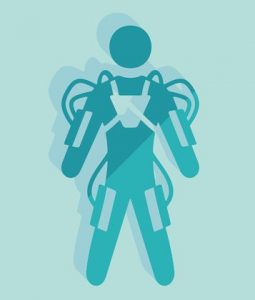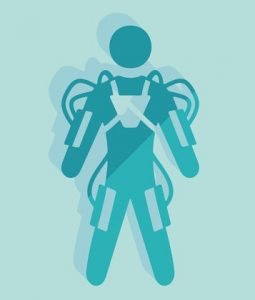Industrial Exoskeletons and Their Perceived Superpowers
08/08/2017


With the rise of the Iron Man and Transformers movies, people are mesmerized with the concept of these characters utilizing external suits to gain superpowers and ultimately save the world. Today, multidisciplinary teams of medical experts, engineers, and researchers are designing, building, and testing exoskeletons all around the world. Wearable exoskeletons are defined in a research article by de Looze et. al as “wearable, external mechanical structures that enhance the power of a person.”
Rehabilitative and military exoskeletons are currently commercially available and support people with strokes, spinal cord injuries, and many other conditions. Wearable robotics for the industrial environment is one of the fastest growing fields of exoskeleton research. During the 2nd Annual Technology & Development Day hosted by Ekso Bionics, Dr. Joseph Hitt, Executive Director of the Wearable Robotics Association, mentioned that the exoskeletons designed for manufacturing and construction use are the “low-hanging fruit” of the exoskeleton market.
Industrial exoskeletons can be either;
- Passive - powered by the human action, or
- Active - actuated by electricity or external sources of energy
Examples include full-body exoskeletons, upper-body ones that support sustained upper limb postures or assist with handling heavy equipment, and lower-body chair-like exoskeletons.
With the exponential increase in interest regarding industrial exoskeletons, we thought it might be interesting to see what YOU think of them. What do you perceive as benefits and risks related to industrial exoskeletons? Let us know what you think in this quick, 2-question survey.
Also, if you have previously used an exoskeleton in your workplace, tell us about your experience in the comment section below.
References:
de Looze, M.P., Bosch, T., Krause, F., Stadler, K.S., & O’Sullivan, L.W. (2015). Exoskeletons for industrial application and their potential effects on physical work load. Ergonomics, 59(5), 671-681.






